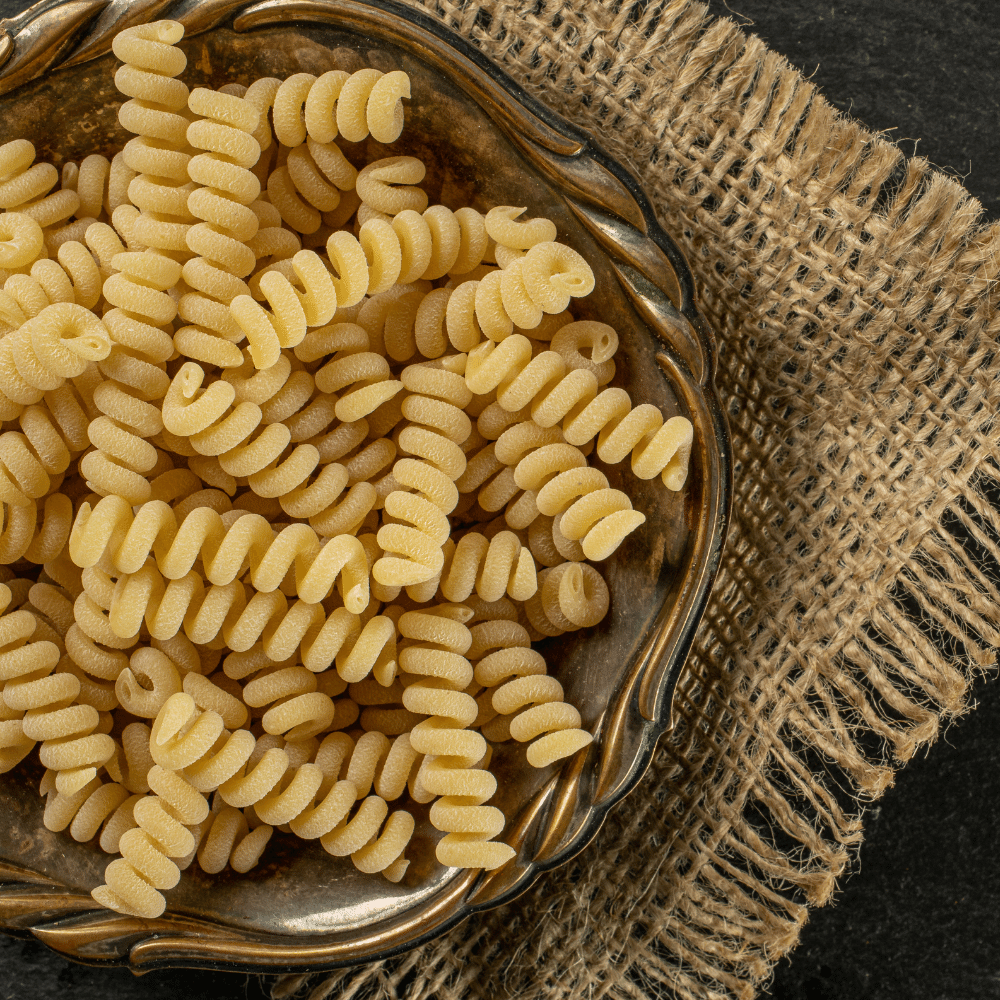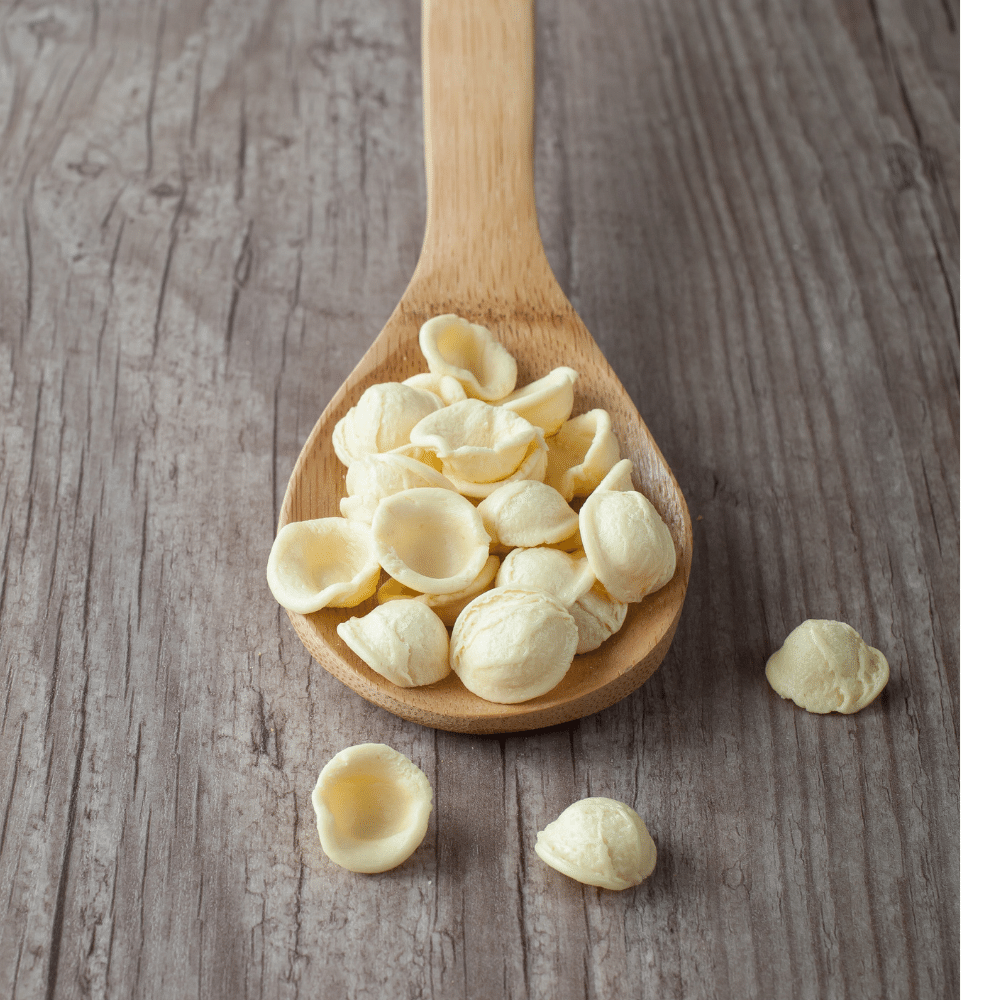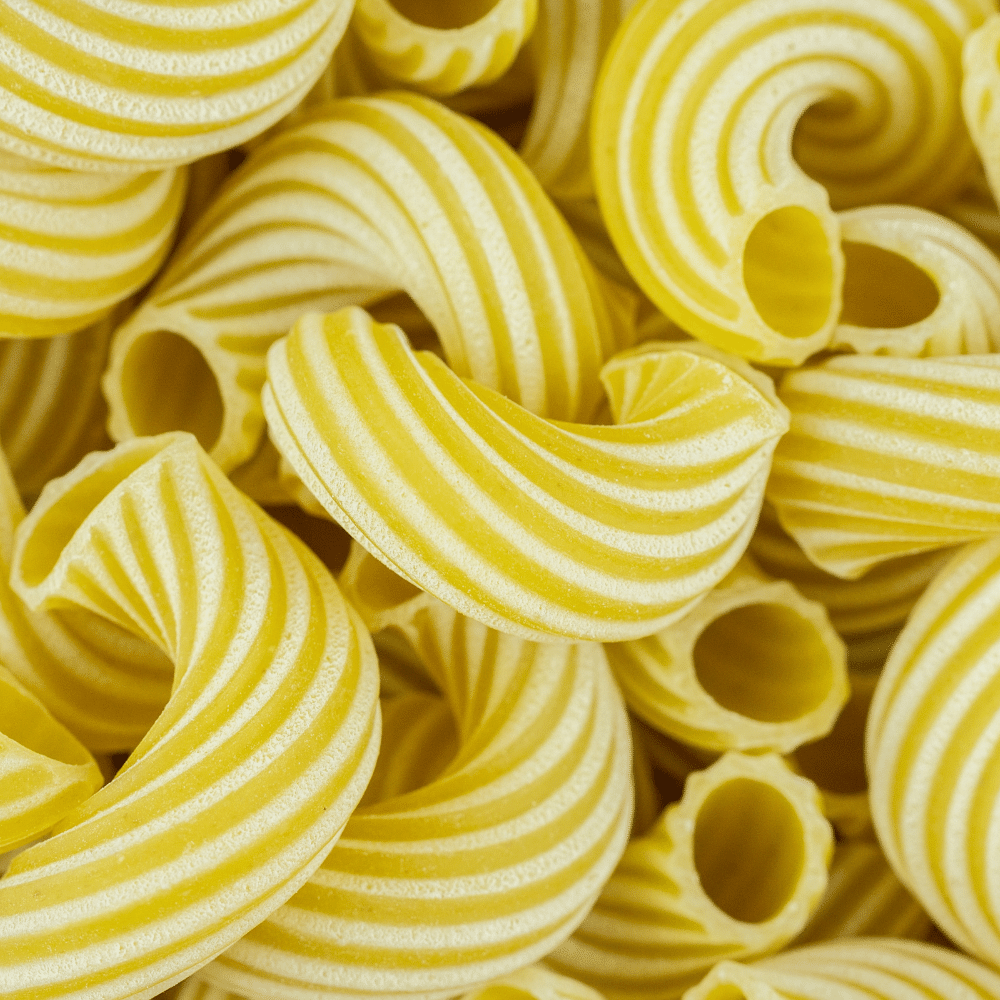If you’re looking for a delicious, nutritious and easy-to-make meal, pasta primavera is the perfect choice.
This classic Italian dish combines vegetables with your favorite type of pasta to make a tasty meal that will leave you feeling satisfied.
But what kind of pasta should you use?
The best pasta for pasta primavera is short-cut varieties like penne, rotini, and fusilli. These types of pasta have ridges and pockets that hold the sauce nicely. Other good choices are farfalle (bow-tie), orecchiette (small ears), and cavatappi (corkscrews).
There are so many different types of pastas out there and it can be difficult to decide which one will work best in your recipe.
In this article, I’ll share my top six picks for the best types of pasta for making pasta primavera.
From penne to rigatoni and even gluten-free options, I have something for everyone!
Read Also: Pasta Primavera Wine Pairing: Best Wines for Pasta Primavera
What is Pasta Primavera?

Pasta Primavera is an Italian-American dish that combines cooked pasta with a variety of vegetables.
The name translates to “spring pasta” and the dish typically includes seasonal vegetables such as asparagus, peas, bell peppers, mushrooms, zucchini, broccoli and carrots.
It can also include other ingredients like shrimp or chicken for added protein.
The traditional method of making Pasta Primavera involves sautéing the vegetables in olive oil until they are tender but still crisp.
Then the cooked pasta is added to the pan along with some butter and Parmesan cheese.
The mixture is then tossed together until everything is evenly coated in sauce and heated through before serving.
Pasta Primavera can be served hot or cold depending on preference and it’s often garnished with fresh herbs like parsley or basil for extra flavor.
This dish makes a great light meal option that’s packed full of vitamins and minerals from all those colorful veggies!
6 Best Types of Pasta for Pasta Primavera
Pasta primavera is a delicious dish that can be made with any type of pasta.
The key is to find the right type of pasta that will best compliment the flavors and textures of the dish.
Here are 6 types of pastas that work well for this recipe, each offering a unique taste and texture:
1. Penne

Penne is a type of pasta that is shaped like tubes with ridges on the outside.
It is usually cut at an angle, and it comes in various sizes.
Penne can be made from durum wheat or other grains such as spelt, kamut, or quinoa.
- Uses: Penne is one of the most popular types of pasta and it’s used in many dishes around the world. It pairs well with creamy sauces, chunky vegetable sauces, pesto sauce, tomato-based sauces, and meaty ragus. It also works great in baked dishes like lasagna or casseroles.
- In Pasta Primavera: Penne works especially well for this dish because its shape holds onto all the vegetables and sauce nicely while still allowing each bite to have a bit of everything mixed together. The ridges on penne also help to hold onto more sauce than smooth pastas do which makes it even better for this dish! To make sure your penne primavera turns out perfectly cooked every time, use a large pot filled with plenty of salted boiling water and cook until al dente (about 8 minutes).
2. Fusilli

Fusilli is a type of pasta that is shaped like a corkscrew or spiral.
It can be made with either white flour or whole wheat flour, and it comes in different sizes.
The most common size is fusilli bucati corti, which are short spirals about an inch long.
- Common Uses: Fusilli is one of the most versatile pastas out there because its shape allows it to hold onto sauces and other ingredients better than other types of pasta. It’s great for dishes like macaroni and cheese, casseroles, salads, soups, and baked dishes. It also pairs well with cream-based sauces as well as tomato-based sauces.
- Using Fusilli in Pasta Primavera: When making pasta primavera with fusilli, you’ll want to use the short variety so that all the vegetables stay together when tossed in the sauce. You’ll also want to make sure you cook the fusilli until al dente before adding it to your dish; this will ensure that all your ingredients are cooked evenly and don’t become mushy or overcooked during baking or reheating. Finally, if you’re using a cream-based sauce for your primavera dish then you may want to add some extra Parmesan cheese on top before serving for added flavor!
3. Farfalle

Farfalle is a type of pasta that is shaped like bow ties or butterflies.
It is also known as “bow-tie” or “butterfly” pasta, and it comes in both large and small sizes.
The name farfalle comes from the Italian word for butterfly, which is farfalla.
- Uses: Farfalle can be used in a variety of dishes including soups, salads, casseroles, and baked dishes. It’s especially popular in pasta primavera because its shape holds sauce well and adds texture to the dish. It can also be used in cold salads with vegetables or tuna fish; it’s great for adding color to any dish!
- Advice for using Farfalle in Pasta Primavera: When making pasta primavera with farfalle, you’ll want to make sure that you cook the pasta al dente so that it still has some bite when served. You’ll also want to add plenty of vegetables such as bell peppers, mushrooms, zucchini, onions, carrots and tomatoes so that there are plenty of flavors going on in the dish. Finally, don’t forget to season your dish with salt and pepper before serving!
4. Orecchiette

Orecchiette is a type of pasta that originates from the Puglia region of Italy.
It is shaped like small ears and has a unique texture that makes it perfect for holding sauces.
The name comes from the Italian word “orecchio” which means ear.
- Common Uses: Orecchiette is most commonly used in soups, salads, and casseroles but can also be served as a side dish or main course. It pairs well with vegetables, seafood, and creamy sauces such as pesto or Alfredo sauce.
- Using Orecchiette in Pasta Primavera: To use orecchiette in pasta primavera, cook the pasta according to package instructions until al dente. Then add your favorite vegetables (such as bell peppers, mushrooms, zucchini) to the pan along with some garlic and olive oil. Once everything is cooked through, stir in some Parmesan cheese and season with salt and pepper to taste before serving!
5. Cavatappi

Cavatappi is a type of pasta that is shaped like a corkscrew or helix.
It has ridges along the outside and a hollow center, which makes it great for holding sauces.
The name comes from the Italian word “cavare,” meaning to hollow out.
- Common Uses: Cavatappi is often used in dishes with creamy sauces, such as macaroni and cheese, because its shape helps hold onto the sauce better than other types of pasta. It can also be used in soups and salads, as well as baked dishes like casseroles.
- Using Cavatappi in Pasta Primavera: This dish typically consists of vegetables cooked with olive oil or butter and tossed with your favorite type of pasta. To make this dish even more flavorful, try using cavatappi instead of traditional spaghetti or penne noodles. The ridges will help to hold onto all the delicious flavors from the vegetables and seasonings you use in your recipe!
6. Rotini

Rotini is a type of pasta that is shaped like a corkscrew or spiral.
It has ridges on the outside and a hollow center, which makes it great for holding sauces.
The name comes from the Italian word “rotire,” which means to twist or turn.
- Rotini is often used in salads, soups, and casseroles because its shape helps it hold onto other ingredients better than other types of pasta. It’s also great for cold dishes since the ridges help keep dressings and sauces on the pasta even after refrigeration. When cooked correctly, rotini has a firm texture that holds up well in dishes with heavier sauces such as Alfredo or marinara sauce.
- When making Pasta Primavera, rotini is an excellent choice due to its ability to hold onto all of the vegetables and sauce in this dish. To get the best results when using rotini for this recipe, make sure you cook it al dente—just until it’s tender but still slightly firm—so that it doesn’t become too soft when mixed with all of the vegetables and sauce.
Conclusion
In conclusion, pasta primavera is a great way to enjoy a delicious Italian dish that is full of vibrant vegetables and savory seasonings.
To make the perfect pasta primavera, it is important to select the right type of pasta.
The best types of pasta for pasta primavera are penne, fusilli, farfalle, orecchiette, cavatappi, and rotini. Each of these pastas has a different shape and texture that will add an extra layer of flavor and texture to your dish.
By selecting the right type of pasta, you can ensure that your pasta primavera is a delicious and satisfying meal.

6 Best Kinds of Pasta for Pasta Primavera
Ingredients
- Penne
- Fusilli
- Farfalle
- Orecchiette
- Cavatappi
- Rotini
Instructions
- Pick your favorite kind of pasta from this list to use in your Primavera recipe.
- Prepare the rest of your meal, and enjoy!
Jenny has always been passionate about cooking, and she uses her platform to share her joy of food with others. Her recipes are easy to follow, and she loves giving tips and tricks to help others create their own unique culinary creations.

